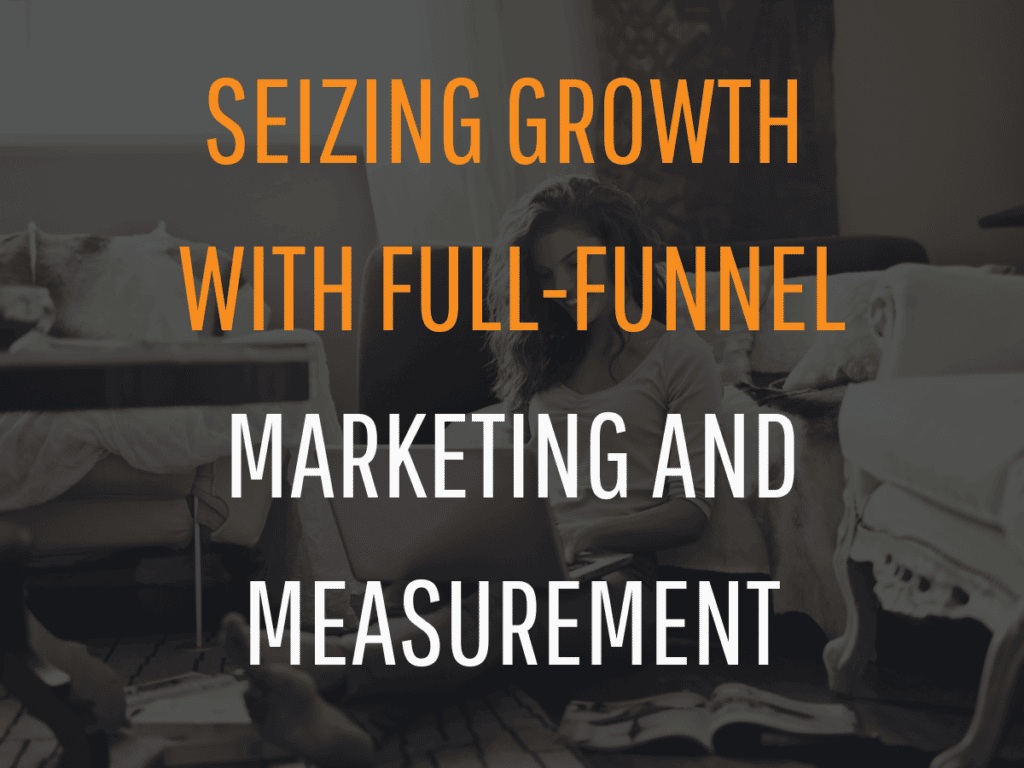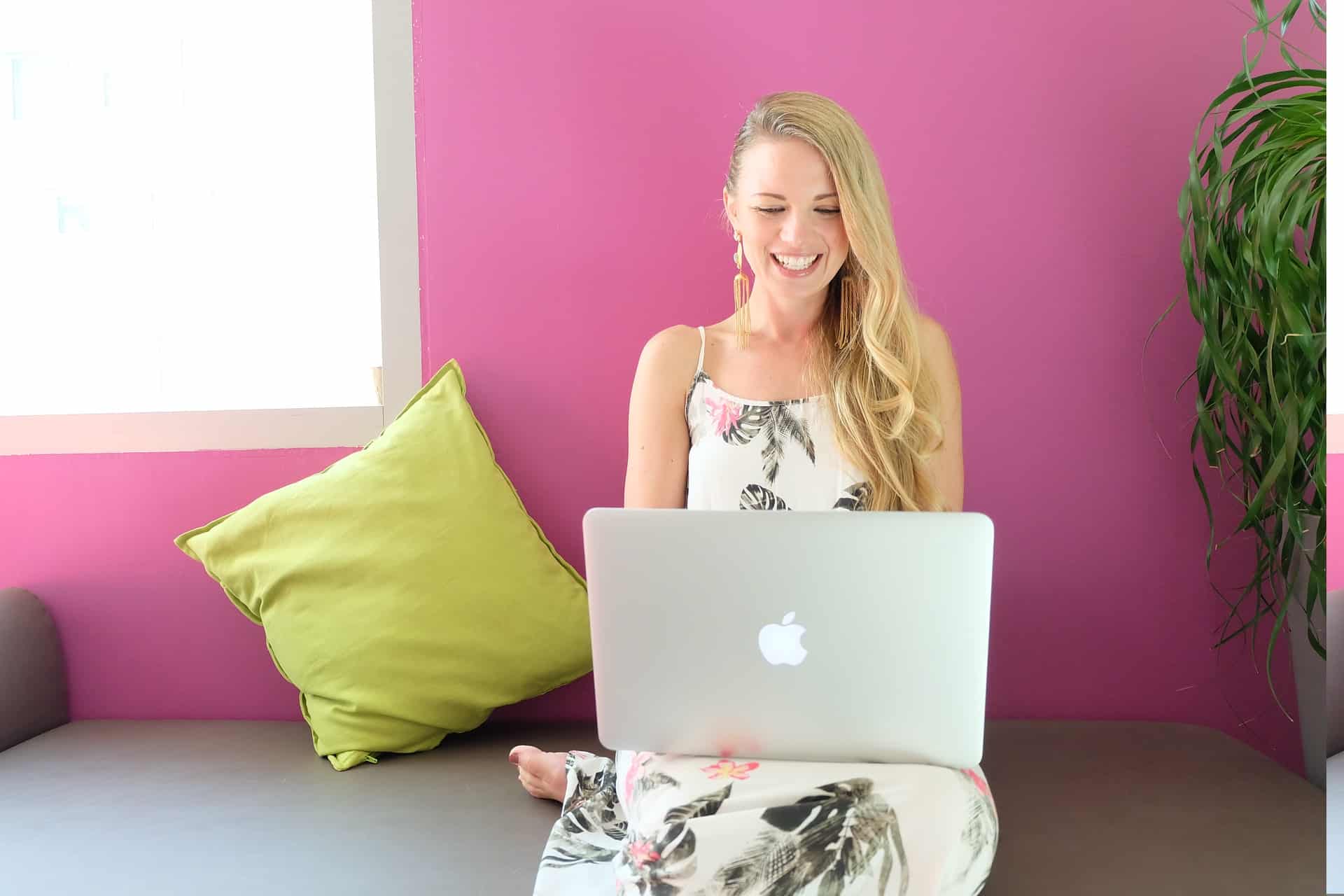Learn how these marketing pros integrate brand and performance marketing efforts.
Traditionally, brand and performance marketing efforts have operated in their own siloes. While the performance side focused on specific metrics like clicks and ROI, the brand side had harder-to-measure goals. But today, many marketers are moving to a “full-funnel” marketing approach that combines the power of both brand-building and performance marketing.
This panel session, Seizing Growth with Full Funnel Marketing and Measurement, discussed how companies are working to integrate and measure these lower-funnel and upper-funnel strategies. “Companies have traditionally split brand and performance marketing efforts,” explains moderator Farzana Nasser, partner at Chameleon Collective. “The brand side, being less measurable, was focused more on building the brand and getting the awareness out there—and then you had performance that was focused on clicks and ROI. But today, companies are moving to this full-funnel approach where they’re integrating the power of the brand with performance marketing.”
Panelists included Amanda Bopp, VP of North America Marketing at Kate Spade; Carolyn Pollock, CMO of Tailored Brands; Joe Yakuel, founder and CEO of Within; Sarah Rasmusen, Chief Customer Officer at Lands’ End. Our full-funnel marketers discussed how they design measurement and their teams to balance top-of-funnel marketing (e.g., TV, social, influencers) with lower-funnel marketing tactics (e.g., search, retargeting) to achieve measurable growth. They dove into how these changes are evolving, shifts in the customer journey, and the tricky question of how to measure performance.
The changing landscape of the customer journey
During the pandemic, people had little chance to encounter brands out in the world, Carolyn Pollock points out. As a result, marketing priorities swung from upper to lower funnel. At the same time, advertising costs were on the rise. As a wedding rental and retail company, Tailored Brands felt the impact of these changes in a big way. So, they focused on strengthening ties with existing customers to keep them loyal. As they shifted to digital and performance marketing, they honed in on innovating in the lower funnel.
Now, Carolyn says, Tailored Brands is doubling down on getting their name out where prospective customers will see it. “We’ve really evolved to taking a more holistic lens on the customer—what’s the relationship we’re trying to build, knowing that there’s a role for each channel,” she says. In short, they’ve come full circle, but they’re not back where they started. Instead, they’re developing an integrated view of lower and upper funnel priorities.
Kate Spade was in the opposite situation three years ago. “The vast majority of our dollars were at the bottom of the funnel, and we were really underfunded from a top-of-the-funnel perspective,” says Amanda Bopp. “As a storytelling brand, we have so many wonderful stories and messages to leverage to connect with the customer, and we just weren’t invested there.” Ramping up top-of-funnel investment a year and a half ago helped them navigate the pandemic.
So, they brought all marketing teams together—organic, paid, brand objective- or awareness-focused—under one full-funnel marketing umbrella, with everything driving down to conversion as one integrated strategy. This allowed them to plan the customer journey more intentionally, balancing their messaging so they could share what truly made their brand special.
Measuring success
Higher-funnel success proves more difficult to measure, as you don’t have immediate, concrete data—but measuring it is vital. “Brands oftentimes are not measuring things that take a long time to materialize, and only measure things that have immediate gratification,” says Joe Yakuel.
Think long-term.
Relying on traditional KPIs to measure everything doesn’t work. “How you measure it, or even the length of time you measure it in, has to be very different,” Joe asserts. “You might have to measure it over 6 months or a year.” To do so, brands need to get creative and use more than one methodology.
Say you want to measure performance of TikTok videos—an upper-funnel platform with notoriously poor attribution. You can actually leverage simple methods of upper-funnel measurements from 20 or 30 years ago, says Joe. Survey people to ask how they heard about your product. This will give you 10 times the info you can gain in-platform, he says. Use simple “How did you hear about us” surveys in order confirmation pages and emails, randomizing the order of responses to avoid bias and adding in a couple of answers that don’t even apply.
Consider doing lifetime holdouts, which means abstaining from using marketing with certain customers to track what happens with them, he also suggests. This will give you a true baseline.
Choose metrics backed by data.
Sarah highlights how at Lands’ End, data science is driving marketing decisions. With an average customer retention rate of 18 years, they still send a lot of catalogs. “It is our most expensive channel, but it’s still our most profitable, hands down,” she says. “Our data science team is doing incredible things with how we direct mail.” They can determine when people are most likely to buy, then send them mailings in particular cycles.
Tailored Brands has been building a new media mix model. To design it, they’ve been running a series of matched market incrementality tests to target the right variables and metrics. In this process, they’ve examined every channel from TV to online video, search, and affiliates, determining where they can geotarget and identifying markets. “Every channel has a metric. Every channel’s got a KPI that you can effectively use; you just have to figure out what it is and what your time window is,” says Carolyn.
“We look at different leading indicators,” she continues. “If you see your direct traffic coming to your website increasing, you see your SEO becoming more effective—those are indicators that maybe people are seeing your brand out there more and actually driving more to your business.”
Joe continually uses a metric called first order of profit—FOP—with clients, which allows a firm to optimize for cash. Lifetime value (LTV) and return on ad spend (ROAS) are also helpful, he notes. You can work with your CFO to view marketing spend not as an expense but as a profit-driver, translating the concepts into their language. These metrics will help you avoid shortchanging creative, he notes.
Triangulate your data.
Regarding leading indicators, leaders and peers often are anxious to understand performance immediately. “They’re looking for one clear answer; it’s often not that easy,” Amanda says. “You often have to bring a lot of pieces of information together and come up with an insight that gives you comfort as to whether your mix is working.” There’s no silver bullet for that, she says.
“You’re essentially triangulating data,” Farzana points out.
Stay flexible.
The upper funnel hit has changed how Lands’ End works on the website side, Sarah says. Whereas they used to be very tied to specific metrics like AOV and UPT, they now have to accept that guest checkout orders, and checkout on the PDP, are part of the new normal. Despite the measurement challenges, it allows them to capture new customers more quickly.
The value of shared learning
Tactics learned in performance marketing have benefitted brand marketing, and vice versa. At Lands End, the teams work very closely together, and they give the brand team a lot of free rein. “The more we let them push that envelope, the quicker we learn on the performance marketing side,” Sarah says. The “coastal grandma” trend unlocked a linen separates page for spring and summer on the performance marketing side that they hadn’t planned on. “If we were not letting them play and explore, we would not have been able to react that quickly and market,” she emphasizes.
They’ve identified such opportunities by thinking about where their customer already is. From a performance standpoint, they have a flexible budget for profitable campaigns. From a brand perspective, they now believe they can apply the same thinking.
Overcoming organizational challenges
Success in full-funnel marketing comes down to team structure and culture. “Depending on how your work is organized, it’s easier or harder to do full-funnel marketing in the most agile way, as far as shifting dollars between different stages of the funnel,” notes Farzana. And agility can be a real necessity in this line of work.
Designing a collaborative culture.
In 2019, Kate Spade aspired to design a fully connected customer journey, says Amanda. She realized they needed to focus on two key priorities: culture and processes. “If you do not have a collaborative culture, full-funnel marketing—and particularly full-funnel measurement and investment—are really, really hard to do,” she says. “You have to have a lot of trust across marketing, and finance, and ecommerce, and you have to be able to communicate, leveraging the same language, in order to make decisions.”
Rethinking approval processes.
They’ve designed processes for approving budget requests to empower their teams to move quickly. They’ve also organized very agile test-and-learn teams. When they need to adapt to market conditions or how customers respond to a category or content, they can act immediately. In the past, they’d begin developing a brand campaign six months out. “Brand used to be a much longer lead time, whereas performance was much more instantaneous,” Amanda says. “A lot of what we’ve done from a culture standpoint is really thought about taking that speed, and injecting it in brand, and then taking that level of thoughtfulness in terms of what we’re putting out to the customer and injecting it in performance.”
Where is the future of full-funnel marketing?
At Tailored Brands, Carolyn says their TV team used to be separated from digital marketing, but that’s no longer how the world works. “We’ve moved to the 50/50 spend split between TV and digital video, online video, and that also fuels social media; it fuels what we’re doing in our display channels,” she explains. This allows them to look holistically at their full spectrum of content and how to distribute it to customers at the right touchpoints. They’re seeing a real payoff to this integrated approach, and a hybridized approach is the future, she asserts.
“Brand is everything. It’s the entire experience that the customer has with you in all those different touch points,” Carolyn also emphasizes. “Our in-store experience is actually a really, really big part of our brand.” Importantly, user-generated content will continue to rise in importance, and the content they create should tie back to the in-store experience. “I think the future’s really all about continuing to blur those lines,” she says.
“It’s really about our customers and our communities coming forward and co-creating with us, telling us exactly what they want, taking our brands and interpreting them on their own, increasingly making content for us. I think in a few years, it’s going to be less about what we all think we should be doing with brand or performance, and more about being able to really amplify the things that consumers are doing to show their love for our brands. It’s all about that, not us,” says Amanda.








